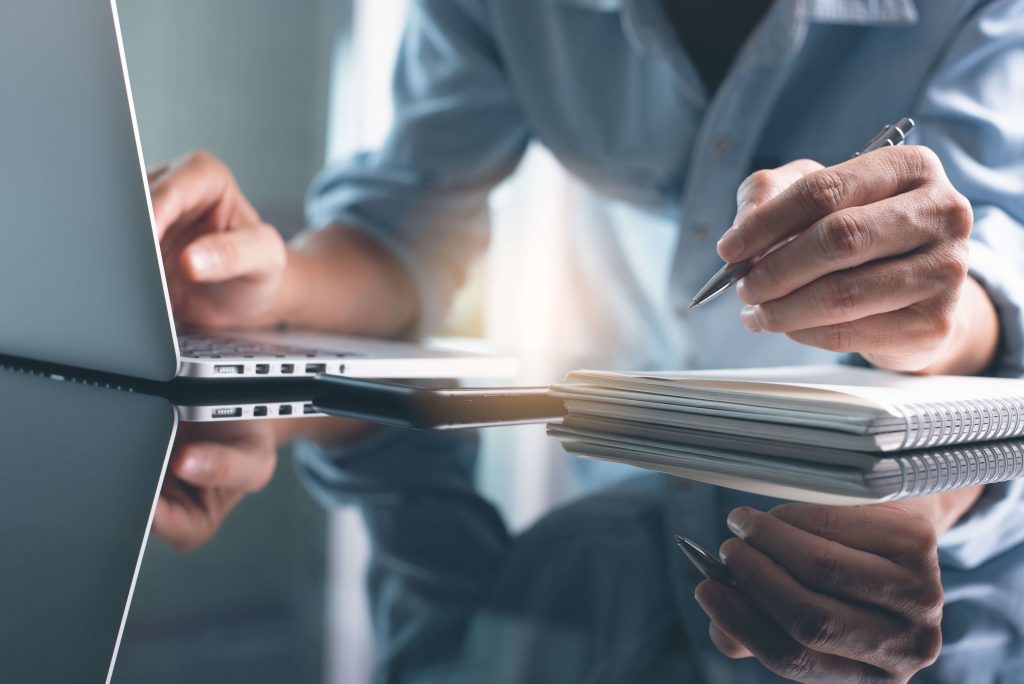If you missed the January 31st tax deadline and were one of almost a million people to receive an automatic £100 late fine, you should consider starting your next tax return very early indeed. There is nothing to be gained by putting it off and you can get the Inland Revenue to calculate the tax bill for you if the return is sent by September 30th. If your tax bill is below £2,000 the money can often be collected through PAYE, which can be useful. The tips below should help you focus on what needs to be done early in the year, rather than at the last minute.
1) Get organised
Start by keeping good tax records each year. You must by law keep records of income, capital gains and expenditure for at least 22 months after the end of the tax year to which they relate. But if you have a business, such as the self-employed, partners and those letting property you must keep your records for at least six years after the end of the tax year. Keeping good, well organised records will make it easier to complete your return. Keep all tax records for each year together in a large box. Mark clearly, use lots of plastic wallets and folders to separate different paperwork and try to keep everything in date order. Remember; if in doubt about any paperwork do not throw it out! Getting replacement copies, for example for certificates of interest from building societies or on share certificates can be a hassle and may cost you money.
2) Start early
If you have a tax advisor they can help, or you can contact your local Inland Revenue office Monday to Friday, 8.30am-4.30pm. Out of hours you can still call the self assessment helpline (0845 9000 444). Tax advisors and accountants will have much more time for you if you start early in the year. By January, they will be under great pressure, and won’t be able to give you the time and attention you may need.
As soon as you receive your tax return, check to see you have the pages you need. (You will need supplementary pages for each employment you have, property income, capital gains etc.) Extra pages can be downloaded from the HMRC website. If you have a tax advisor, check what information they want and the date they want it by. If you are doing it yourself think about what you need to complete it. Assemble all relevant records such as P11Ds, pension contribution records, GiftAid payments etc. Make sure you have all calculated figures for all invoices and receipts. Once you have all your figures you can start filling in the return.
3) Make sure the return is complete
Put the figures in the necessary boxes, and do not offer information on separate sheets. Do not rush this process, and make sure you read all the questions carefully. For instance if you write ‘information to follow’ or ‘see attached accounts’ or ‘per PAYE’ the form will not be accepted and will be sent back. If the complete return is not received by the deadline, you still have to pay a penalty so there is nothing to be gained from doing a half-hearted job.
4) Send in good time
Not only does this allow for errors to be corrected, but it should remind you to pay in good time also. You will have to pay interest, and possibly surcharges if you pay late.
5) Consider filing electronically
Again, if you want to use this system do not leave it until the last minute. You need to register on the site first, and this can take a week. The e-filing system can cope with most circumstances these days, and has the great benefit of calculating your tax bill automatically.
6) Avoid common mistakes
Classic errors include mixing up interest received gross with interest that has had tax deducted at source, as is the case with most bank and building society interest, and trying to enter ISA/PEP income, which is tax free. Another mistake is not making sure that cash received plus tax deducted/tax credit equals the gross amount for both dividends and interest. Do not forget that some benefits, such as state pension and Jobseekers allowance are taxable, but others, such as child benefit, are not. Remember to include your own personal pension contributions as gross figures to ensure you get tax relief. But do not try to log ordinary contributions to your employer’s pension fund. Do not to record pence, but round down. An amazing number of people manage to complete the tax form but then forget to sign and date it, so after you checked the form thoroughly, make sure you do this.
7) Remember the deadlines
Whatever happens does not lose sight of the 31st January payment deadline. You must pay your final amount of tax for the last completed tax year by this date, and, in many cases make a first payment on account for the next tax year. It is difficult to estimate this accurately, despite the tax calculations given. If you overestimate you will get money back, but you must complete the section on the form which tells HMRC how you would like the repayment refunded. There will also be a further deadline of 31st July for the second lot of tax due, so don’t forget that either.
One third of the ten million people who receive a tax return each year leave it until January and have to cope with the stress and hassle of dealing with a mountain of last minute paperwork. Make sure you are not one of them, and remember there is nothing to be gained, and everything to lose by putting off filling in the dreaded return.




